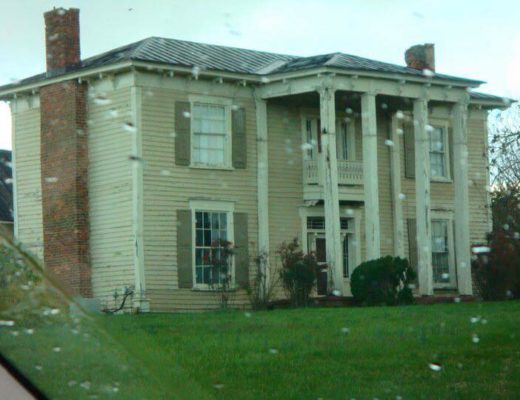Italianate architecture emerged in the early 19th century as part of the larger Picturesque movement, which sought to break away from the more rigid, classical styles such as Greek Revival. Its origins can be traced to England, where it was popularized by architect John Nash in the 1800s. Nash’s designs, particularly for the seaside resort of Regent’s Park in London, drew inspiration from the informal villas and farmhouses of the Italian countryside, rather than the grander classical buildings.
The Italianate style was characterized by a more relaxed and romantic aesthetic, mimicking the asymmetrical, rustic charm of Italian rural villas. It gained traction in England and soon spread across Europe and the United States during the 1830s and 1840s. In America, it became one of the dominant architectural styles, especially for residential buildings, and was championed by architects like Alexander Jackson Davis and Andrew Jackson Downing. Davis, in particular, helped popularize Italianate designs through his pattern books and country house designs.
The style became widely popular in the U.S. during the mid-19th century due to its versatility and adaptability to both urban and rural settings. It was especially common in cities like New York, Philadelphia, and San Francisco, where it was used for townhouses and commercial buildings. Italianate homes in the U.S. often featured more elaborate ornamentation than their European counterparts, with decorative cornices, heavy brackets, and arched windows. The Italianate style began to wane in the 1870s as architectural tastes shifted toward more ornate styles like Second Empire and Queen Anne. Despite this, many Italianate structures have survived and are appreciated for their elegance and contribution to 19th-century architectural history. Today, it remains an iconic style in both Europe and the U.S., reflecting the Romantic era’s fascination with picturesque landscapes and historical revivalism.
We have a couple of houses that are under the Italianate architecture. Named, Emerald Grove and Red Grove. Check out the tour we recently did of Red Grove:
https://www.facebook.com/share/v/FGwwi3SpS9zLigkb/?mibextid=WC7FNe
Examples:

Dr. William L. Robertson House, 1874. Danville, VA.

Lawson-Overbey House, 1881. Danville, VA.

Danville, VA.
Key Features of Italianate Architecture Include:
- Low-pitched or flat roofs: Often featuring wide, overhanging eaves supported by decorative brackets (also known as corbels).
- Tall, narrow windows: Frequently topped with arches and often adorned with elaborate crowns.
- Tall, Ornamented Doors: Doors are often tall and highly decorative, sometimes featuring paired entrances with heavy moldings and archways.
- Cupolas or towers: Many Italianate buildings feature a square or octagonal tower, or *belvedere*, giving them a distinctive look.
- Quoins: Large, decorative cornerstones used for both visual and structural purposes.
- Porches and Balconies: These often have ornate supports and railings, inspired by classical designs. This style was widely adopted for townhouses, commercial buildings, and even large country homes, offering a picturesque, romantic aesthetic.
Some More Examples:

Fox-Hawkins House, 1879. Danville, VA.

J. H. Schoolfield House. 1884. Danville, VA.

Witcher Jones House, 1875. Danville, VA.
Examples Outside of Danville, VA:









